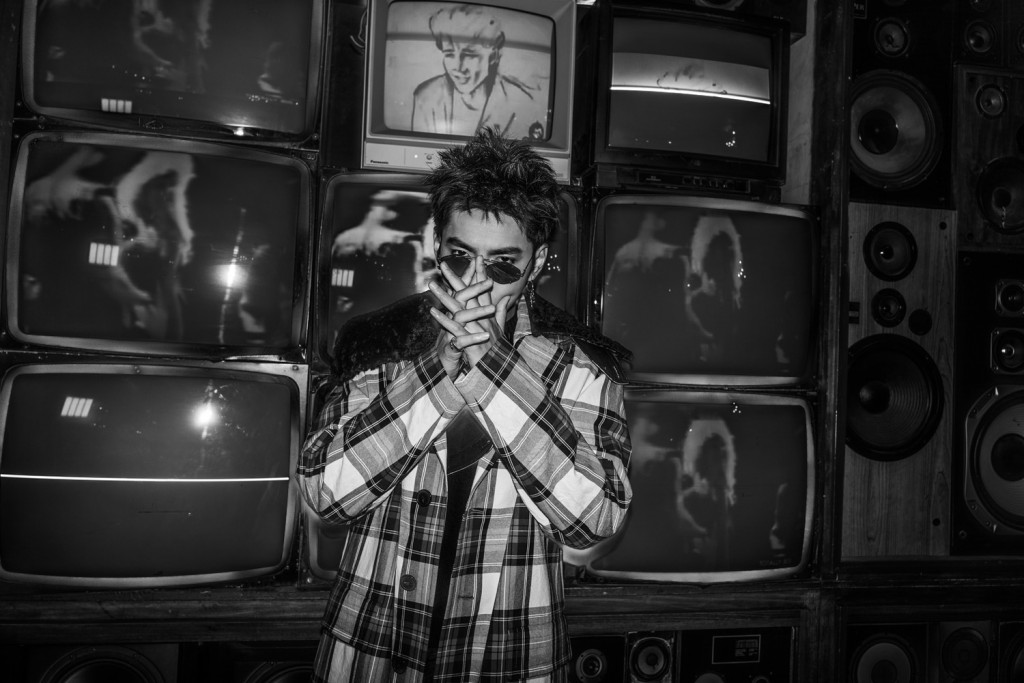
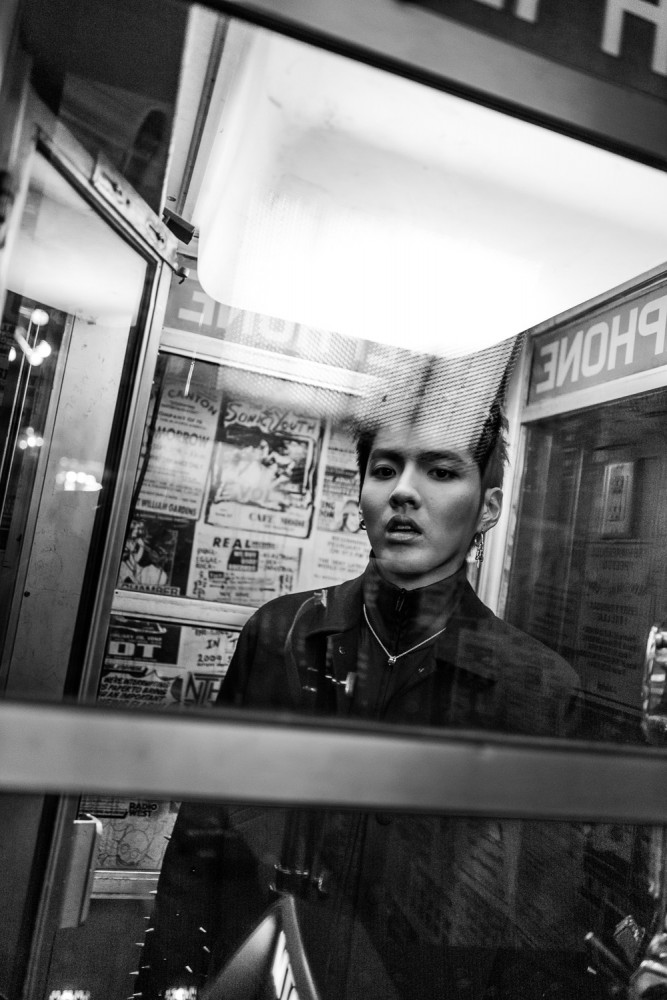
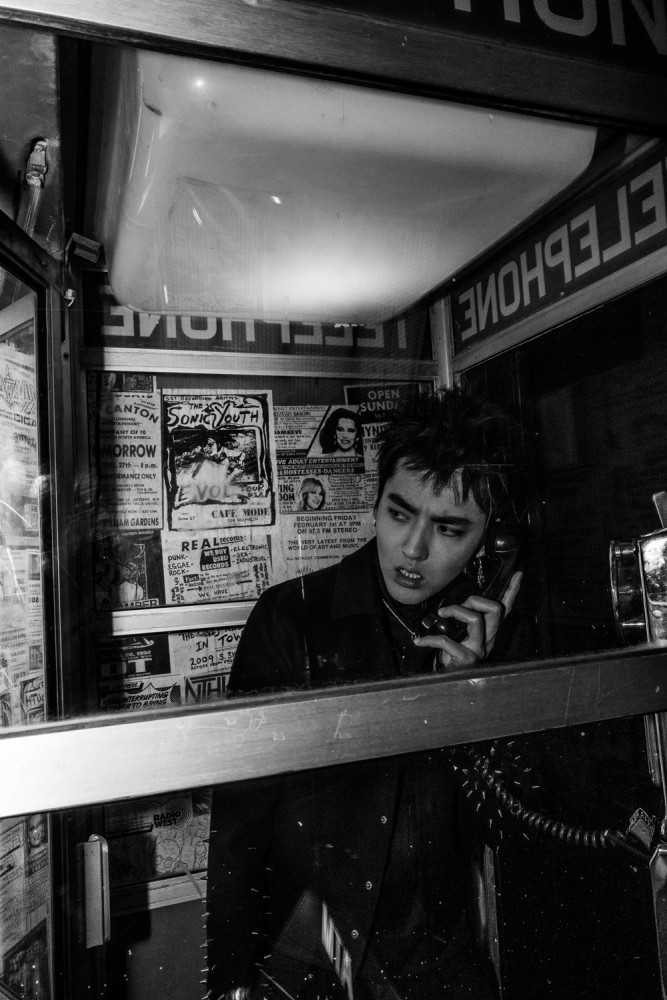
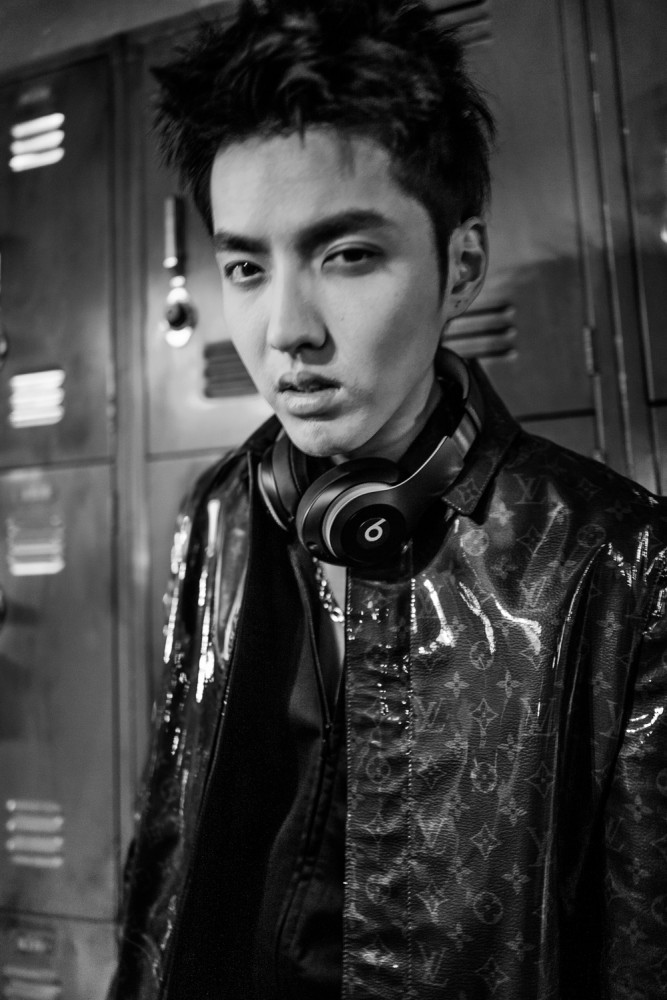

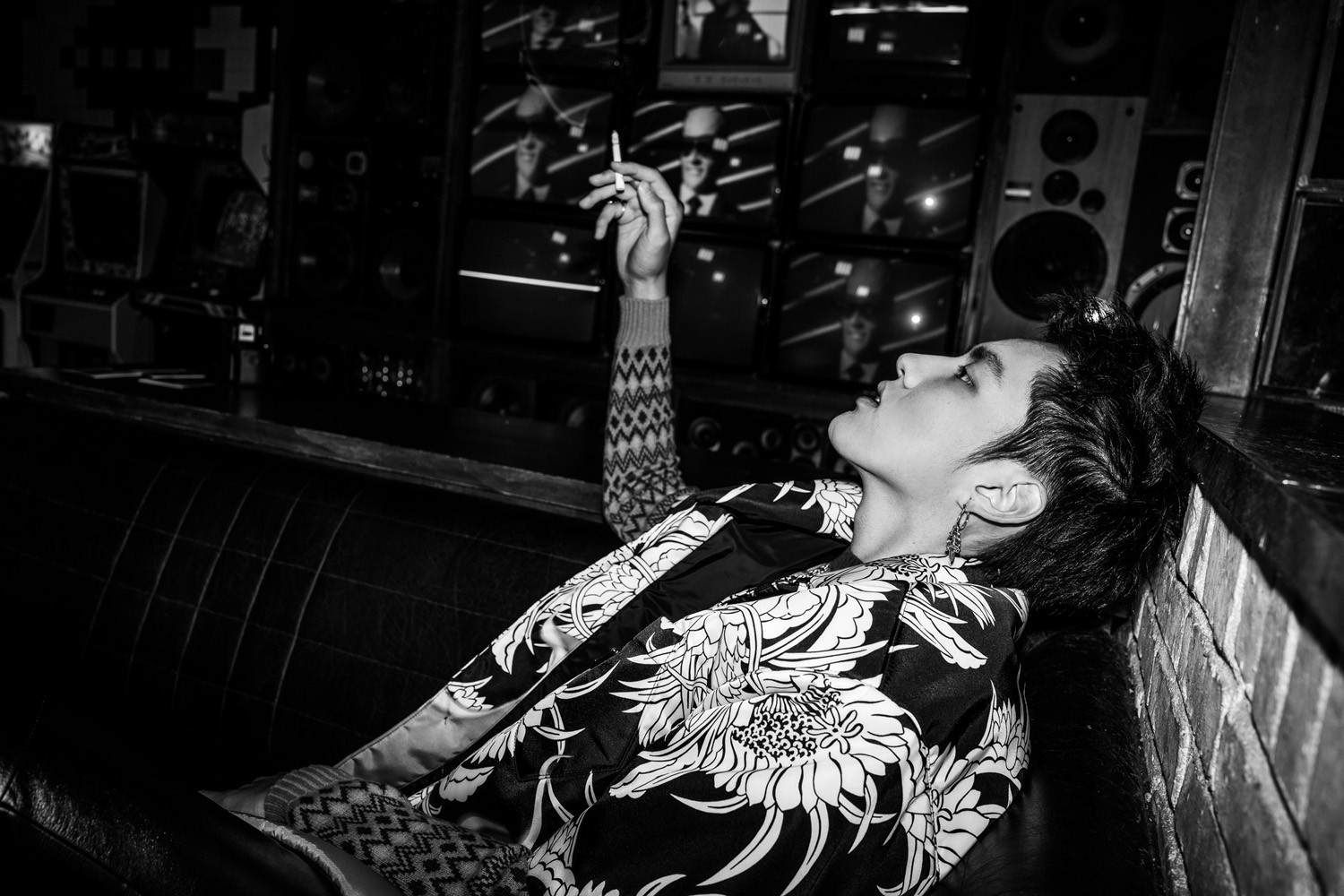
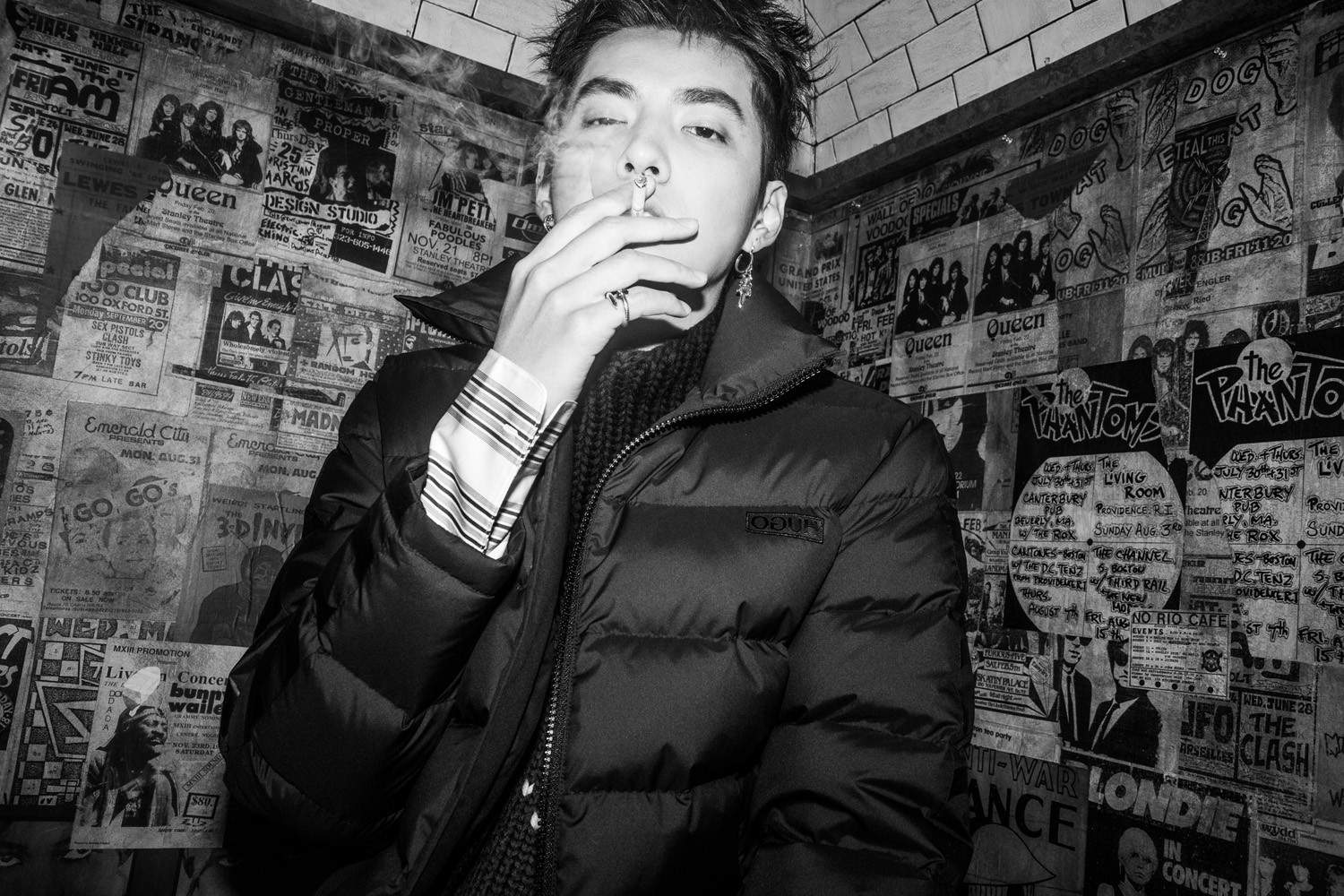
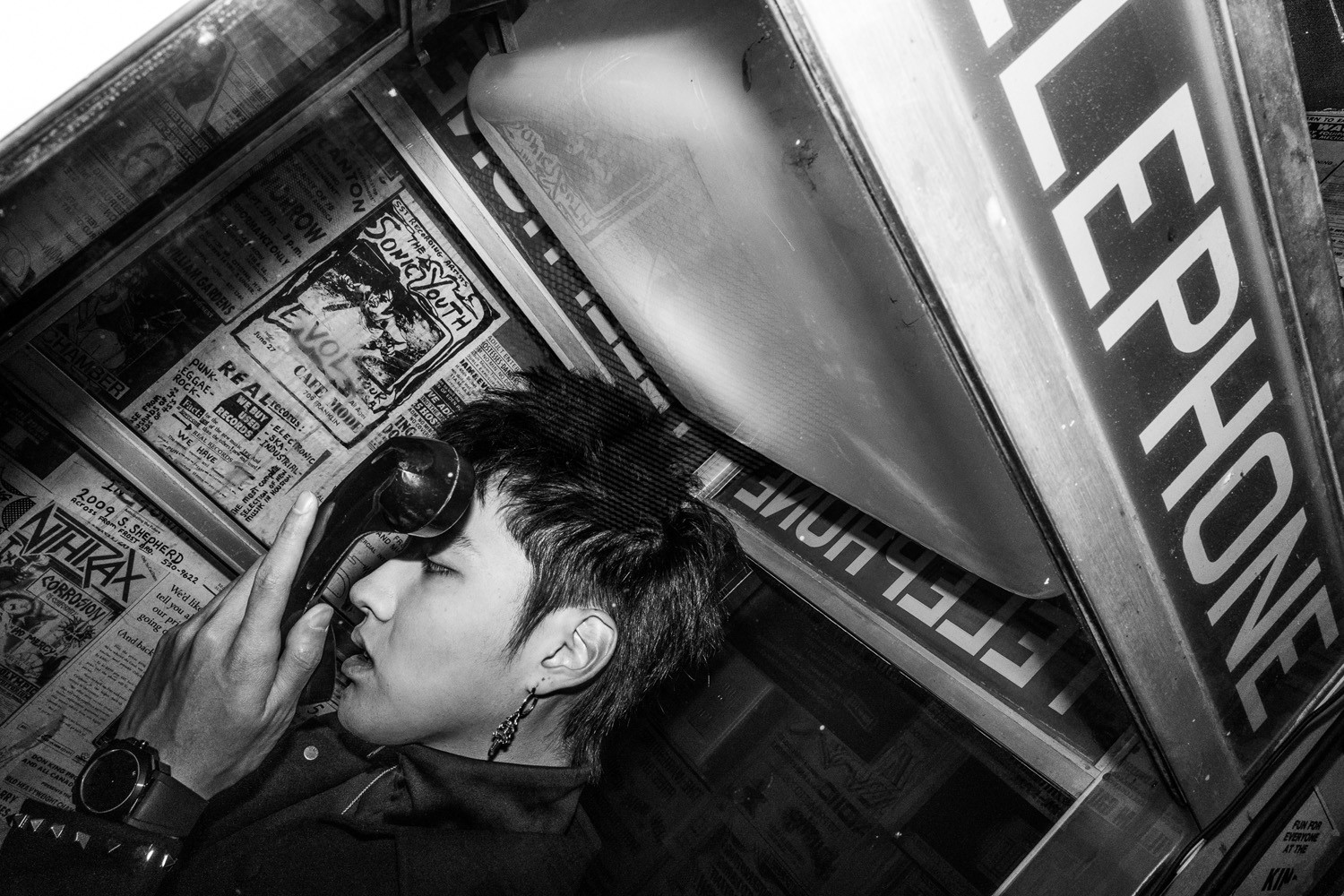
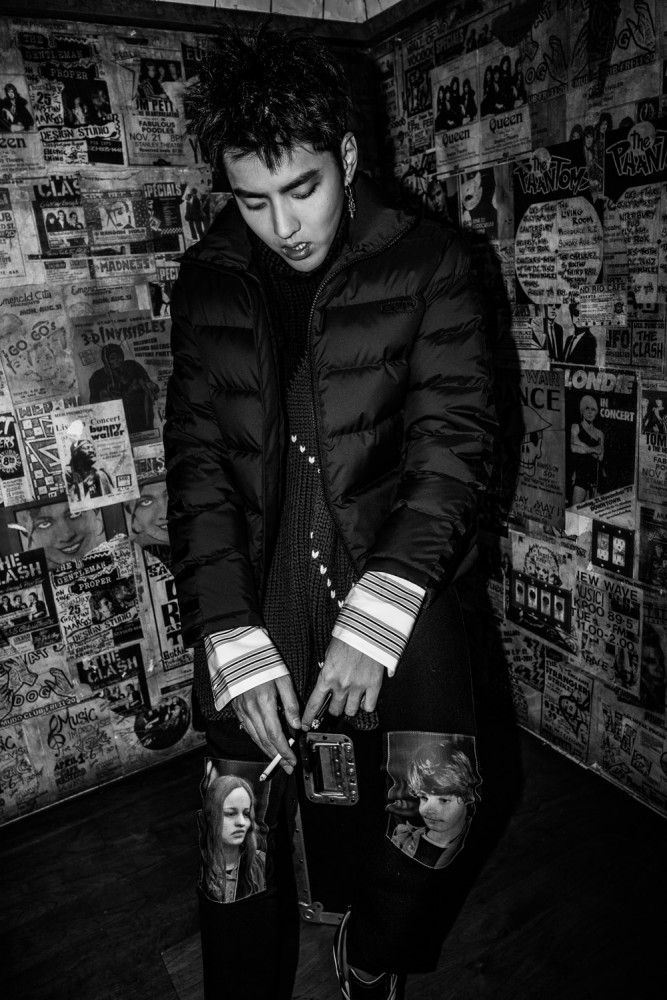
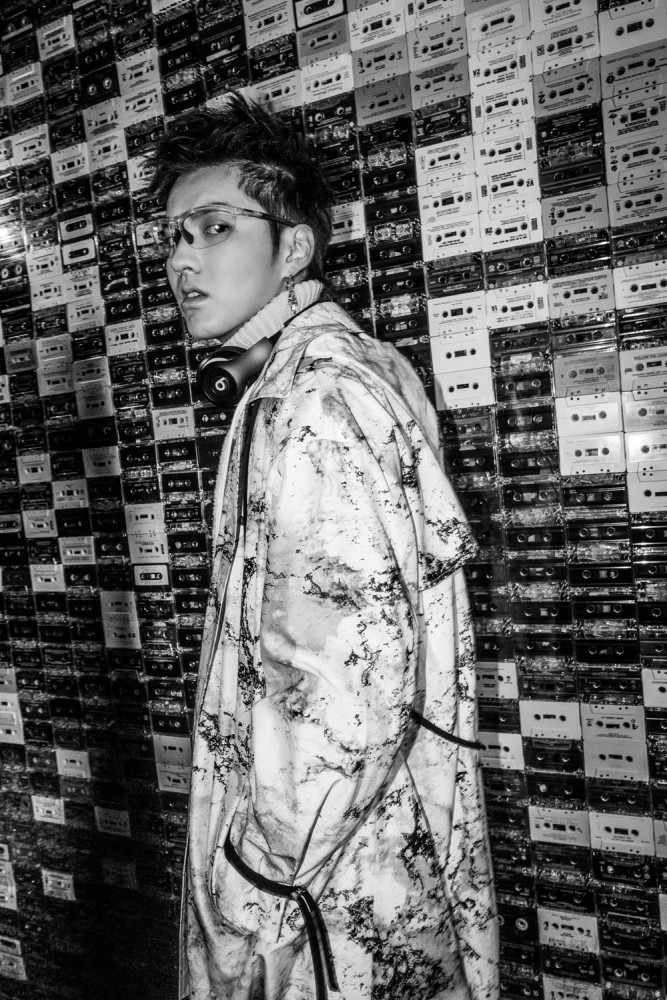












INTERVIEW
Bil Brown
PHOTOGRAPHY Bil Brown STYLING Mui-Hai Chu STYLING ASSISTENT Britton Litow PHOTO ASSISTENT Drew Pluta MODEL Kris WU CAMERA Leica S (Typ 007) with Elmarit-S 45 f/2.8 ASPH. (CS), Summarit-S 70 f/2.5 ASPH. (CS), Summicron-S 100 f/2 ASPH. and Leica SL with SUMMICRON-M 35mm f/2 ASPH.
In ‘Hanging on the Telephone’, rapper and multi-talent Kris Wu, also reveals his emotional, multi-faceted, acting ability. Documented by Bil Brown in powerful black and white imagery, Wu presents this series of Prada looks with styling by Mai-Hai Chu.
You've been working as an artist for thirty years: first as a musician, then a writer, and then a photographer. How is this reflected in your photographic style?
Music is an emotional intelligence; at their best, writers have to develop a way of looking at things with an eye to different perspectives, and explain it in a simple way. I think a photographer covers both of these things, and I often use music and writing to influence my stories.
You were born and grew up in the USA, but you lived for some time in Prague. Two quite different worlds. To what degree has this influenced you?
I will always have a close relationship with Prague, and really Europe in general. Also, living and working in a country that, at the time, was still just abandoning closed market ideals and entering into a more global market, gave me a strong understanding of the actual impact of visual communication. What you put out there can literally change culture. I try to find the poetic truth of something, even if it’s just a portrait session.
Now you have produced a photo series with Kris Wu, the Chinese-Canadian hip-hop singer, actor and model. What was special during the photo shoot?
It was a lot more laid back than I had expected. Honestly, although I had heard of Kris through the grapevine of fashion, I didn’t expect him to be as chill as he was. In China he is quite the attraction; a sort of Chinese Brad Pitt for his generation. In LA, it wasn’t as typical because not as many people know him. Though, I may be wrong. I was driving past Chinatown in Los Angeles the other day, and saw Kris’s face on a billboard; so maybe I am just naive about his celebrity. Which is fine. Perfect even. I felt it was a gift. He had a lot of input on how he wanted to be seen.
The young Wu has had an enormous career for some time, and is building his own particular bridges between west and east. What do you think of that?
Honestly. I think Asian/North American artists have had it pretty rough. They don’t get the recognition of the Hispanic community, and certainly not the same as Black artists - especially in Hip-Hop, Rap, and other more or less popular forms of entertainment. Although I don’t know Kris’s complete story, I think his connection to mainland China and cross-Pacific influence is a great opportunity to take popular culture in a direction that it needs to go. It can’t just be about this Euro-American centric culture. Over half the planet is Asian, mostly Chinese. I for one am interested in what they have to say, and create!
Your pictures of Wu don't look like typical celebrity shots. They include a rather broad range of different visual expressions. What was it you wanted to show?
I have a particular visual style I think, or at least so I’ve been told. The location had a lot to do with the story. It is sort of like this speak-easy in a hotel that you can only get to if you know where it is. The door is sort of hidden and looks like a freezer door that then opens up into this world of music and sub-cultural influence. In those environments, historically-speaking, anything goes. You don’t have to be worried about what people say. It's literally behind closed doors, and that is what I feel a big artist in the world experiences. They might have their PR people and management keeping a particular public persona out there, but I am always interested in how they deal with the excess of popularity.
Wu has quite a weakness for fashion, and likes to try out very diverse styles – from edgy hip-hop to the finest Haute Couture fashion labels. What fashion did you use? Did he put it together himself and decide for himself what to wear?
The fashion editor for a larger LA magazine put the looks together; it’s pretty much Prada, LVHM, Chanel, etc. Honestly, last time I was in Paris I went to the Galleries Layfayette department store and saw bus loads of Chinese tourists picking up the brands we were shooting with. I think that identifying with the luxury of the European fashion houses is a thing now in China. Makes sense, their economy is doing pretty well.
You have an impressive Leica camera collection that you use regularly. Which one did you choose for this photo shoot?
Primarily I shot with the Leica S typ 007 with 45 CS, 100 and 70 CS lenses, and took the video with the Leica SL and 24-90 in L Log keeping the SL on a gimble. Some pick-up shots on video were also done with a RED, with Leitz Cine lenses and some M lenses as they have an M mount. I also shot stills with the Leica Q, and M10. So a lot of cameras and lenses. I used flash and strobes for some shots, but mostly Kinoflow lights, and just trusted the lenses and high dynamic range to keep me honest.
How many camera systems do you normally take on a photo shoot, and why such different models as medium and full format?
I always have an M body on site, or on my person, with typically a 35 or 28mm. The M lenses are my go-to because of how absolutely perfect they are, without the little technical difficulties the AF lenses tend to get into. I will use my M lenses, especially the telephoto lenses like the 90mm or 135, on the Leica SL. I will also use the L mount native 24-90 and 90-280 when I can, but the M lenses make the SL so much smaller for my wrist and grab the shots –
but just using the SL like an M. Focus peaking on the 2015 SL is STILL some of the best I have ever seen in a modern camera. The SL is also my secret A cam for cinematic video.
The S system is a go-to for most fashion shots because, to this day, it still has the best color rendering and detail of any Leica. A MUST for fashion photography, and the stylists and editors love it.
I also have a SoFort for instant photography especially on these portrait shoots, and it's good for the artists to see this antiquated way of shooting in a new way. They will often take a instant photo with them and post it on social media or whatever. Cute.
You are the publisher of the magazine Black & Grey. How important do you think print still is today? What do you reckon the tendency to be?
I think print magazines are best done in small runs, unless the brand has a history, and a budget, to print high quality regularly. People who collect print magazines want something that lasts beyond a season. They want something that is a sort of historical document of the times, or that gives them long-form information. Nowadays, a magazine is closer to an art object than to the marketing platform it was before. The traditional distribution models are failing or have failed. I can get my work to Thailand or Stockholm, as well as Nashville, in an instant. It’s only when the internet closes down and makes us worry about what we say, show or do and how we do it, that it gets tricky. Print still goes beyond this and can’t be censored as easily; you have to physically BURN copies of magazines and books to get rid of them, and this usually happens AFTER they are already out there.
We are in a new age. Globalism is real. Embrace it while holding on to the BEST of the past.